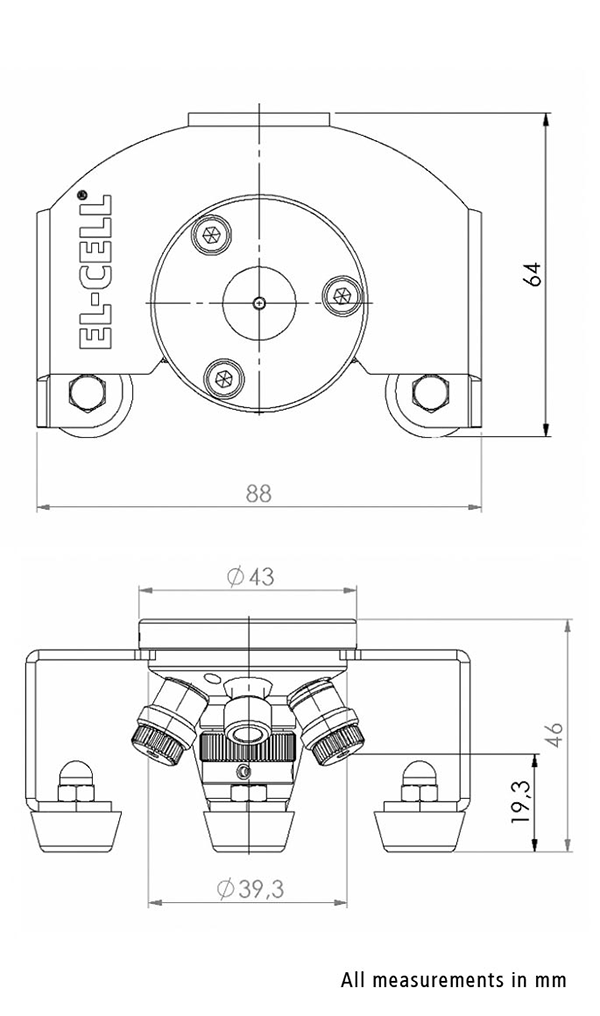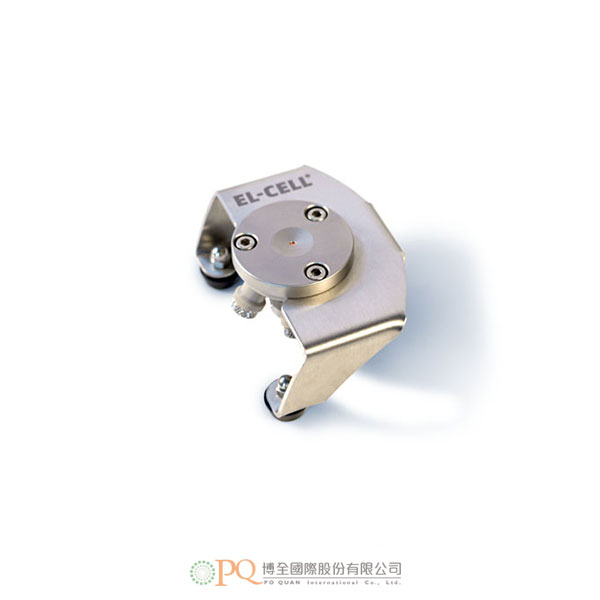
-
 AARONIA AG
AARONIA AG
-
 ADASH
ADASH
-
 Amptek
Amptek
-
 AOiP
AOiP
-
 AstroNova
AstroNova
-
 Automatic Research
Automatic Research
-
 AWSensors
AWSensors
-
 BASI
BASI
-
 BRS
BRS
-
 CALMET
CALMET
-
 CHECKLINE
CHECKLINE
-
 Cmc
Cmc
-
 C-Tech
C-Tech
-
 CTRL
CTRL
-
 DANATRONICS
DANATRONICS
-
 DV Power
DV Power
-
 EA Technology
EA Technology
-
 ECH
ECH
-
 EL-CELL
EL-CELL
-
 Electrothermal
Electrothermal
-
 Elsys
Elsys
-
 ELVEFLOW
ELVEFLOW
-
 Enapter
Enapter
-
 ENERGY SUPPORT
ENERGY SUPPORT
-
 Enervac
Enervac
-
 FASTEC
FASTEC
-
 Gaskatel
Gaskatel
-
 GE
GE
-
 GIUSSANI
GIUSSANI
-
 Globecore
Globecore
-
 GMW
GMW
-
 GREENLIGHT
GREENLIGHT
-
 GRZ
GRZ
-
 HIGH SENSE SOLUTIONSHTW
HIGH SENSE SOLUTIONSHTW
-
 HTW
HTW
-
 HUBER
HUBER
-
 HVPD
HVPD
-
 Ida
Ida
-
 Instytut Fotonowy
Instytut Fotonowy
-
 IVIUM
IVIUM
-
 Jacomex
Jacomex
-
 Jenway
Jenway
-
 JGG
JGG
-
 KEHUA TECH
KEHUA TECH
-
 Labdex
Labdex
-
 Labnics
Labnics
-
 LIQUID
LIQUID
-
 METERTEST
METERTEST
-
 Metrel
Metrel
-
 Microrad
Microrad
-
 micrux
micrux
-
 ndb
ndb
-
 Neware
Neware
-
 Norecs
Norecs
-
 Novocontrol
Novocontrol
-
 OKOndt Group
OKOndt Group
-
 OZM
OZM
-
 Pine Research
Pine Research
-
 Redoxme
Redoxme
-
 SATIR
SATIR
-
 SDT
SDT
-
 Serstech
Serstech
-
 VacCoat
VacCoat
-
 Zurich
Zurich
- AARONIA AG
- ADASH
- Amptek
- AOiP
- AstroNova
- Automatic Research
- AWSensors
- BASI
- BRS
- CALMET
- CHECKLINE
- Cmc
- C-Tech
- CTRL
- DANATRONICS
- DV Power
- EA Technology
- ECH
- EL-CELL
- Electrothermal
- Elsys
- ELVEFLOW
- Enapter
- ENERGY SUPPORT
- Enervac
- FASTEC
- Gaskatel
- GE
- GIUSSANI
- Globecore
- GMW
- GREENLIGHT
- GRZ
- HIGH SENSE SOLUTIONSHTW
- HTW
- HUBER
- HVPD
- Ida
- Instytut Fotonowy
- IVIUM
- Jacomex
- Jenway
- JGG
- KEHUA TECH
- Labdex
- Labnics
- LIQUID
- METERTEST
- Metrel
- Microrad
- micrux
- ndb
- Neware
- Norecs
- Novocontrol
- OKOndt Group
- OZM
- Pine Research
- Redoxme
- SATIR
- SDT
- Serstech
- VacCoat
- Zurich
ECC-Opto-Std
ECC-Opto-Std 型號:ECC-Opto-StdTest cell for optical and X-ray characterization in the reflective mode – with face-to-face arrangement of electrodes.
- Adjustable, reproducible and homogeneous mechanical pressure on electrodes
- Electrodes are easily accessible for post-mortem analysis
- Easy and reliable electrolyte filling upon assembly
-
Test cell for optical and X-ray characterization in the reflective mode with face-to-face arrangement of electrodes
Product description
The ECC-Opto-Std test cell is dedicated to the inspection of electrodes by optical methods such as light microscopy or Raman spectroscopy working in the reflection mode. Basically, the respective instrument looks through a transparent window onto the backside of the working electrode. For this purpose the working electrode is to be supported on a perforated current collector or a current collector having a single small hole in its center. Different versions are available for use in either aprotic or aqueous electrolytes and can be adapted to the optical instrumentation used.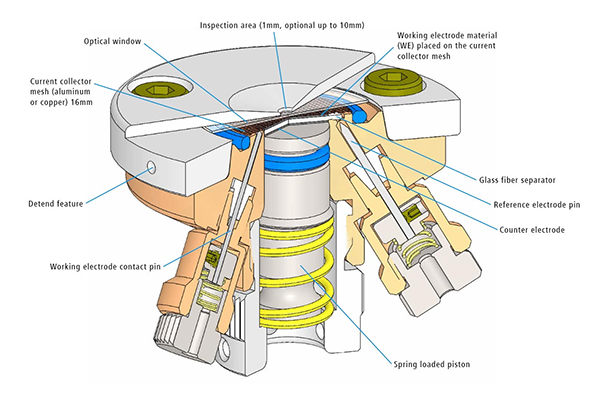
Windows for ECC-Opto-Std
As a standard, the ECC-Opto-Std is equipped with a borosilicate glass window1 (Order no. LAB0018/V) and a cell lid with a 2 mm diameter window opening (Order no. ECC1-00-0127-A).
Depending on your testing purposes additional window kits are available. Each kit includes one or more windows and a modified cell lid. Further window materials like magnesium oxide, silicon dioxide, silicon nitride or PET (Mylar®) are available on request..Gallery
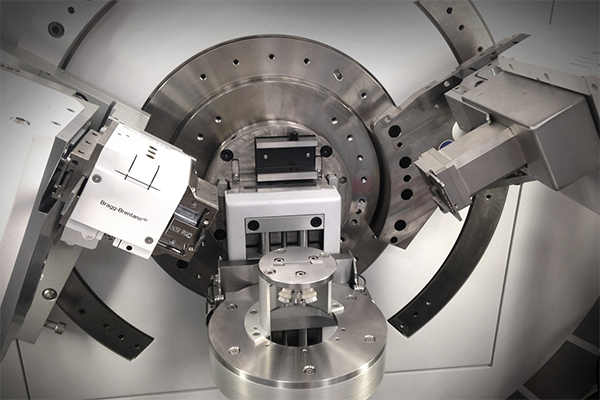
The ECC-Opto-Std with ECC-Opto Beryllium window kit II has been installed in the Empyrean diffractometer from Malvern Panalytical for CC cycling experiments.
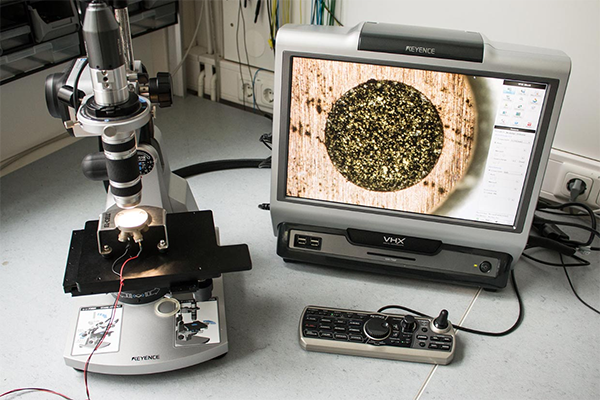
Test setup with ECC-Opto-Std and Keyence VHX-700FD microscope
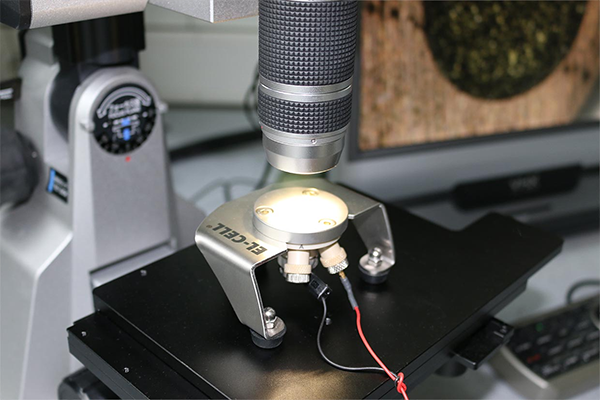
ECC-Opto-Std test setup
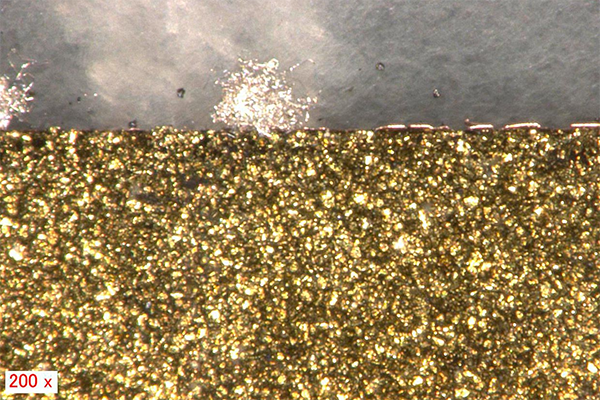
Dendrite growth during electrochemical lithiation visualized using a ECC-Opto-Std test cell.
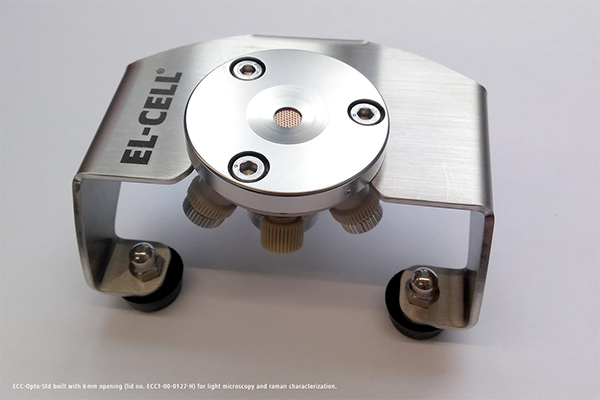
ECC-Opto-Std with 6mm opening
-
Height 46 mm Width 88 mm Depth 63 mm Weight approx. 200 g Electrode diameter 10 mm Electrolyte volume min. 0.1 ml 